Grow Cucumbers at Home? Absolutely! Imagine biting into a crisp, refreshing cucumber you nurtured from a tiny seed, right in your own backyard. Forget those bland, store-bought cucumbers; we’re talking about homegrown goodness bursting with flavor. For centuries, cucumbers have been a staple in diets around the world, dating back to ancient India. They’re not just delicious; they’re packed with nutrients and incredibly versatile in the kitchen.
But let’s be honest, sometimes growing cucumbers can feel a little daunting. Pests, diseases, and just plain confusion about the best methods can leave you feeling defeated. That’s where these DIY tricks and hacks come in! I’m here to share my tried-and-true secrets for a bountiful cucumber harvest, even if you’re a complete beginner.
This article is your ultimate guide to successfully grow cucumbers at home. We’ll cover everything from choosing the right varieties for your climate to simple DIY solutions for common cucumber-growing problems. Get ready to transform your garden into a cucumber paradise and enjoy the satisfaction of harvesting your own delicious, healthy cucumbers!
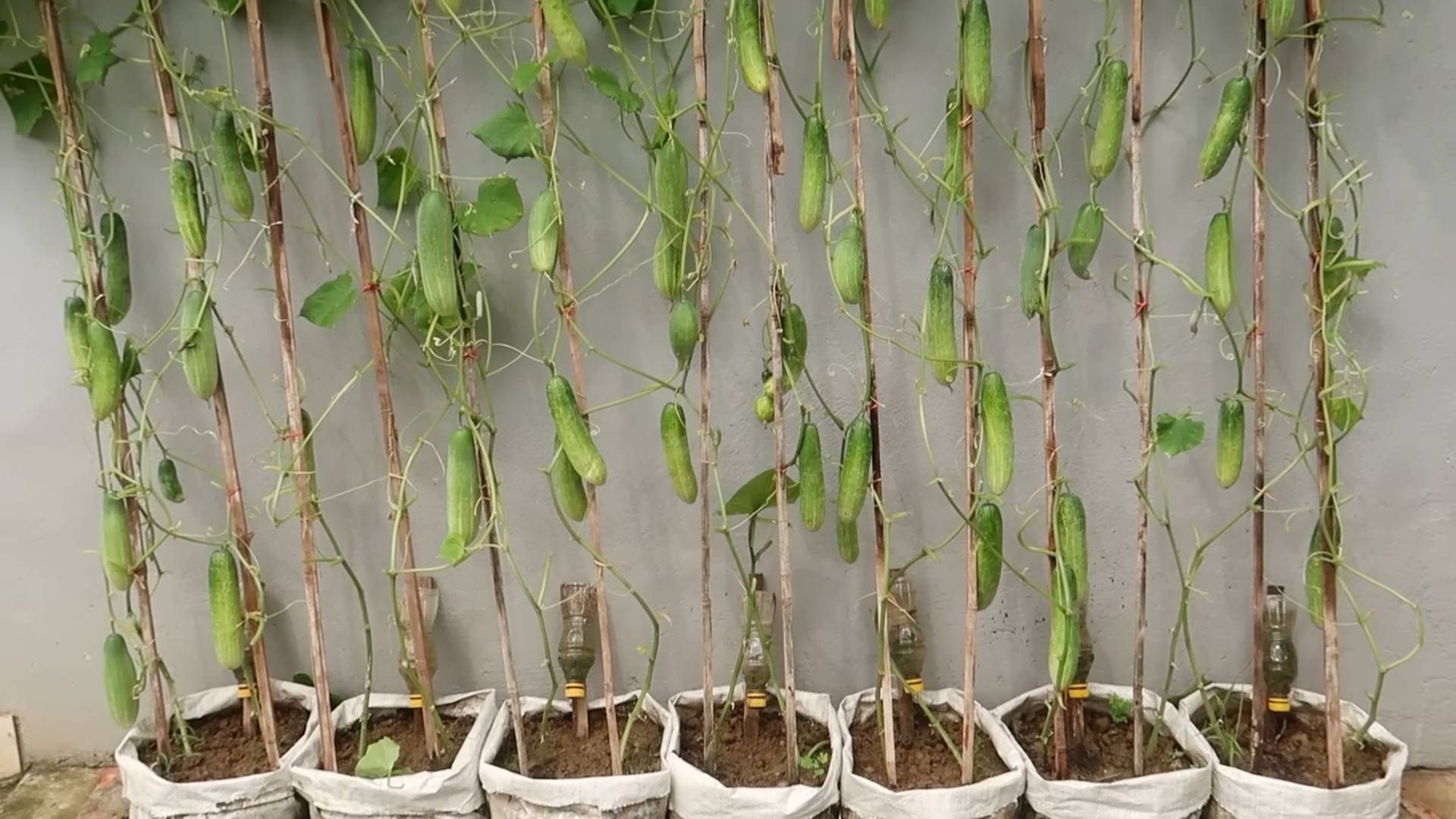
Growing Cucumbers at Home: A Beginner’s Guide
Hey there, fellow gardening enthusiasts! I’m so excited to share my experience and guide you through the process of growing your own delicious cucumbers right at home. Trust me, there’s nothing quite like the satisfaction of biting into a crisp, homegrown cucumber. It’s easier than you might think, and I’m here to break it down step-by-step.
Choosing Your Cucumber Variety
Before we get our hands dirty, let’s talk about cucumber varieties. There are a ton of options, and the best one for you will depend on your space, climate, and what you plan to do with your cucumbers.
* **Slicing Cucumbers:** These are your classic cucumbers, perfect for salads and sandwiches. They usually have smooth, dark green skin. Some popular slicing varieties include ‘Marketmore 76’, ‘Straight Eight’, and ‘Burpee Hybrid’.
* **Pickling Cucumbers:** These are smaller and have thicker skin, making them ideal for pickling. ‘National Pickling’ and ‘Boston Pickling’ are great choices.
* **Burpless Cucumbers:** These are bred to be less bitter and easier to digest. ‘Sweet Slice’ and ‘Armenian’ are popular burpless varieties.
* **Bush Cucumbers:** If you’re short on space, bush cucumbers are your best bet. They grow in a compact form, perfect for containers. ‘Spacemaster’ and ‘Bush Champion’ are good options.
I personally love growing ‘Marketmore 76’ for slicing and ‘National Pickling’ for, well, pickling!
Getting Started: Seeds vs. Seedlings
You have two options for starting your cucumber plants: from seeds or from seedlings (small plants you buy at a nursery).
* **Starting from Seeds:** This is the more economical option, and it gives you more control over the entire growing process. However, it requires a bit more patience and attention.
* **Starting from Seedlings:** This is a faster and easier option, especially for beginners. You’ll get a head start on the growing season, but you’ll have fewer variety choices.
I’ve done both, and honestly, I prefer starting from seeds. There’s something really rewarding about watching those tiny seeds sprout and grow into thriving plants.
Starting Seeds Indoors (Optional)
If you live in a cooler climate with a shorter growing season, starting your cucumber seeds indoors is a great way to get a head start.
1. **Gather Your Supplies:** You’ll need seed starting trays or small pots, seed starting mix (not regular potting soil!), cucumber seeds, and a spray bottle.
2. **Fill the Trays/Pots:** Fill each cell or pot with seed starting mix, leaving about half an inch of space at the top.
3. **Sow the Seeds:** Plant two or three cucumber seeds in each cell or pot, about half an inch deep.
4. **Water Gently:** Use a spray bottle to moisten the soil. Avoid overwatering, as this can lead to rot.
5. **Provide Warmth and Light:** Place the trays or pots in a warm location (around 70-80°F) and provide plenty of light. A sunny windowsill or a grow light will work well.
6. **Keep the Soil Moist:** Check the soil daily and water as needed to keep it consistently moist, but not soggy.
7. **Thin Seedlings (If Necessary):** Once the seedlings emerge (usually within a week), thin them to one plant per cell or pot by snipping off the weaker seedlings at the soil line.
Preparing Your Garden Bed
Cucumbers need a sunny spot with well-drained soil. They also love rich soil, so amending your garden bed with compost or aged manure is a great idea.
1. **Choose a Sunny Location:** Cucumbers need at least 6-8 hours of sunlight per day.
2. **Prepare the Soil:** Loosen the soil to a depth of at least 12 inches. Remove any rocks, weeds, or debris.
3. **Amend the Soil:** Mix in plenty of compost or aged manure to improve drainage and fertility. I usually add a couple of inches of compost to my garden bed.
4. **Consider a Trellis:** Cucumbers are vines, so they’ll need something to climb on. A trellis, fence, or even a sturdy tomato cage will work well. This also helps with air circulation and prevents the cucumbers from rotting on the ground.
Planting Your Cucumbers
Whether you started your cucumbers from seeds indoors or bought seedlings, it’s time to get them in the ground!
1. **Harden Off Seedlings (If Applicable):** If you started your seeds indoors, you’ll need to harden them off before transplanting them to the garden. This means gradually exposing them to outdoor conditions over a period of a week or so. Start by placing them outside in a sheltered location for a few hours each day, gradually increasing the amount of time they spend outdoors.
2. **Planting Time:** Wait until the danger of frost has passed and the soil has warmed up to at least 60°F.
3. **Spacing:** Space your cucumber plants about 12-18 inches apart if you’re using a trellis, or 2-3 feet apart if you’re letting them sprawl on the ground.
4. **Dig Holes:** Dig holes that are slightly larger than the root balls of your seedlings or the size of your seed starting pots.
5. **Plant Carefully:** Gently remove the seedlings from their pots and place them in the holes. If you’re planting seeds directly in the ground, plant them about half an inch deep.
6. **Backfill and Water:** Backfill the holes with soil and water thoroughly.
Caring for Your Cucumber Plants
Once your cucumbers are planted, it’s important to provide them with the care they need to thrive.
1. **Watering:** Cucumbers need consistent moisture, especially during hot weather. Water deeply and regularly, aiming for about an inch of water per week. Avoid overhead watering, as this can lead to fungal diseases. Drip irrigation or soaker hoses are ideal.
2. **Fertilizing:** Feed your cucumber plants with a balanced fertilizer every few weeks. I like to use a liquid fertilizer diluted to half strength.
3. **Weeding:** Keep the area around your cucumber plants free of weeds. Weeds compete with your cucumbers for water and nutrients.
4. **Mulching:** Apply a layer of mulch around your cucumber plants to help retain moisture, suppress weeds, and regulate soil temperature. Straw, wood chips, or shredded leaves are all good options.
5. **Training:** If you’re using a trellis, train your cucumber vines to climb it. Gently guide the vines up the trellis and tie them loosely with twine or plant ties.
6. **Pest and Disease Control:** Keep an eye out for pests and diseases. Common cucumber pests include aphids, cucumber beetles, and squash bugs. Common diseases include powdery mildew and downy mildew. Treat any problems promptly with organic pest control methods or fungicides. I’ve found that neem oil is effective against many common cucumber pests.
Harvesting Your Cucumbers
The moment you’ve been waiting for! Harvesting your cucumbers at the right time is crucial for getting the best flavor and texture.
1. **Harvest Time:** Cucumbers are typically ready to harvest about 50-70 days after planting, depending on the variety.
2. **Check the Size:** Harvest your cucumbers when they reach the desired size for their variety. Slicing cucumbers are usually harvested when they’re about 6-8 inches long, while pickling cucumbers are harvested when they’re about 3-4 inches long.
3. **Look for Color:** The color of your cucumbers should be uniform and vibrant. Avoid harvesting cucumbers that are yellow or have soft spots.
4. **Harvest Carefully:** Use a sharp knife or pruning shears to cut the cucumbers from the vine, leaving about an inch of stem attached.
5. **Harvest Regularly:** Harvest your cucumbers regularly to encourage continued production. Overripe cucumbers can become bitter and tough.
Troubleshooting Common Cucumber Problems
Even with the best care, you might encounter some problems while growing cucumbers. Here are a few common issues and how to address them:
* **Yellowing Leaves:** This can be caused by a variety of factors, including nutrient deficiencies, overwatering, or disease. Check the soil drainage and nutrient levels, and treat any diseases promptly.
* **Bitter Cucumbers:** This can be caused by stress, such as inconsistent watering or high temperatures. Make sure to water your cucumbers regularly and provide them with some shade during the hottest part of the day. Also, some varieties are naturally more prone to bitterness.
* **Misshapen Cucumbers:** This can be caused by poor pollination or nutrient deficiencies. Make sure there are plenty of pollinators in your garden, and fertilize your cucumbers regularly.
* **Powdery Mildew:** This is a fungal disease that causes a white, powdery coating on the leaves. Improve air circulation, avoid overhead watering, and treat with a fungicide if necessary.
Enjoying Your Homegrown Cucumbers
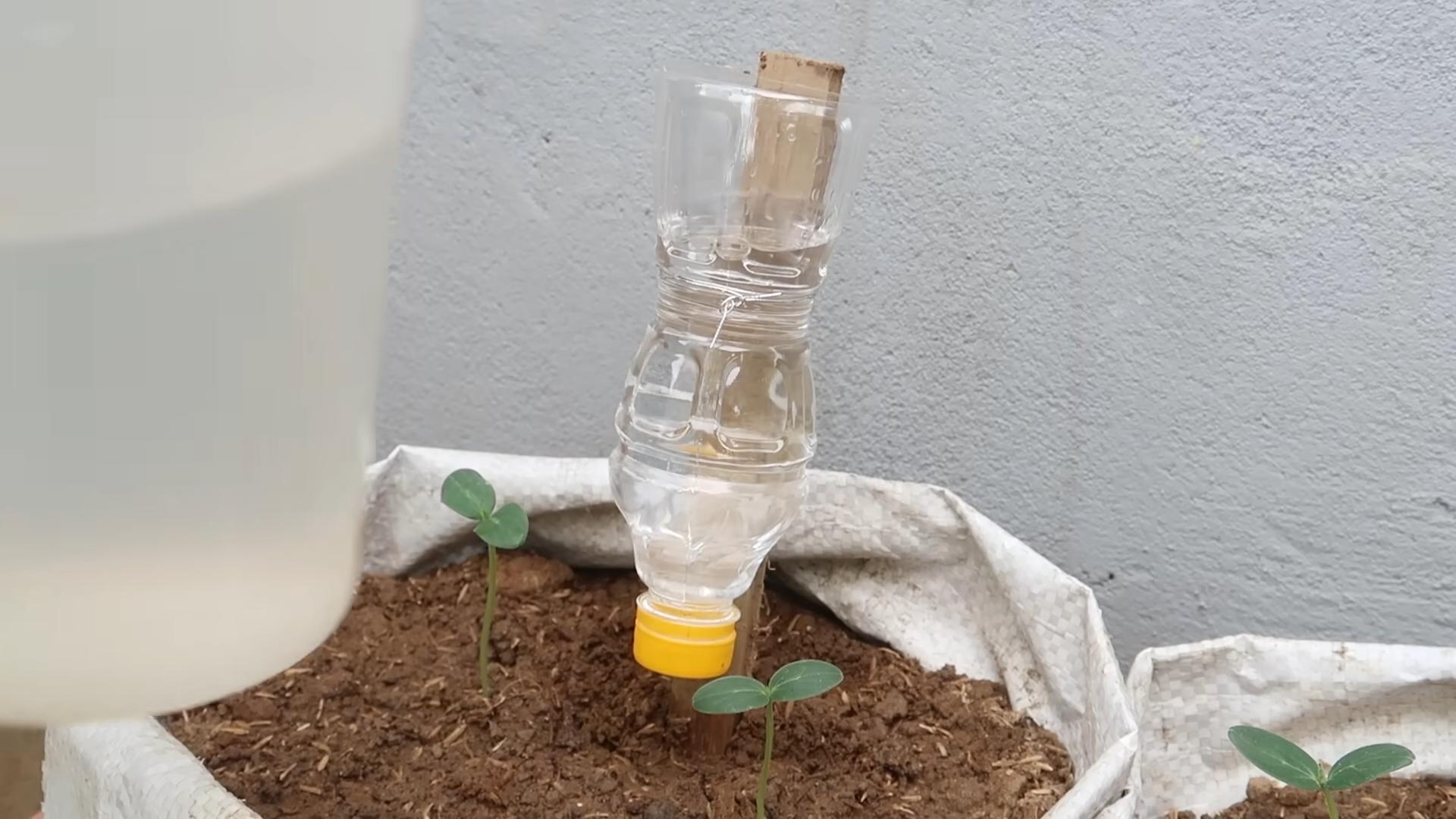
Conclusion
So, there you have it! Growing cucumbers at home isn’t just a gardening project; it’s a gateway to fresher, tastier, and more satisfying meals. Forget those bland, waxed cucumbers from the grocery store. Imagine biting into a crisp, juicy cucumber you nurtured from seed to harvest, knowing exactly what went into its growth – sunshine, water, and your own loving care. The difference in flavor and texture is truly remarkable.
This DIY approach to growing cucumbers offers a level of control and customization you simply can’t achieve with store-bought produce. You can choose heirloom varieties bursting with unique flavors, experiment with different growing methods to maximize yield, and even tailor the nutrient profile of your cucumbers to suit your specific dietary needs. Plus, there’s an undeniable sense of accomplishment that comes with nurturing a plant from seed to table.
But the benefits extend beyond just taste and control. Growing your own cucumbers is also a sustainable and eco-friendly choice. You’re reducing your carbon footprint by eliminating transportation costs and minimizing the use of pesticides and herbicides often associated with commercial agriculture. You’re also contributing to a healthier ecosystem by providing a habitat for beneficial insects and pollinators.
And don’t think you need a sprawling garden to enjoy homegrown cucumbers. With the right techniques, you can successfully grow cucumbers in containers on a balcony, patio, or even indoors with supplemental lighting. Consider trying bush varieties, which are specifically bred for compact growth, or training vining varieties up a trellis to save space.
For those looking to add a little zest to their cucumber cultivation, consider these variations:
* Pickling Cucumbers: If you’re a fan of pickles, dedicate a portion of your cucumber patch to pickling varieties like ‘National Pickling’ or ‘Boston Pickling’. These cucumbers are smaller and have a firmer texture, making them ideal for brining and fermenting.
* Lemon Cucumbers: For a unique twist, try growing lemon cucumbers. These round, yellow cucumbers have a mild, slightly sweet flavor that’s perfect for salads and snacking.
* Armenian Cucumbers: Also known as snake cucumbers, these long, slender cucumbers have a mild, burpless flavor and a crisp texture. They’re great for slicing and adding to sandwiches or wraps.
* Vertical Gardening: Maximize your space by growing cucumbers vertically on trellises, fences, or even repurposed ladders. This not only saves space but also improves air circulation and reduces the risk of disease.
We wholeheartedly encourage you to give this DIY trick a try. Whether you’re a seasoned gardener or a complete beginner, growing cucumbers at home is a rewarding and enjoyable experience. The satisfaction of harvesting your own fresh, flavorful cucumbers is truly unmatched.
So, grab some seeds, prepare your soil, and get ready to embark on a cucumber-growing adventure! And most importantly, don’t forget to share your experiences with us. We’d love to hear about your successes, challenges, and favorite cucumber varieties. Share your photos, tips, and recipes in the comments below. Let’s build a community of cucumber enthusiasts and inspire others to discover the joys of homegrown produce. Happy gardening!
Frequently Asked Questions (FAQ)
What are the best cucumber varieties to grow at home?
The best cucumber varieties for home growing depend on your space, climate, and preferences. For beginners, bush varieties like ‘Bush Champion’ or ‘Spacemaster’ are excellent choices due to their compact size and ease of care. If you have more space and want a higher yield, vining varieties like ‘Marketmore 76’ or ‘Straight Eight’ are popular options. For pickling, consider ‘National Pickling’ or ‘Boston Pickling’. If you’re looking for something unique, try lemon cucumbers or Armenian cucumbers. Research varieties that are well-suited to your local climate and growing conditions for the best results.
How much sunlight do cucumbers need?
Cucumbers need at least 6-8 hours of direct sunlight per day to thrive. Choose a location in your garden that receives plenty of sunlight throughout the day. If you’re growing cucumbers indoors, you’ll need to supplement with grow lights to provide adequate light. Insufficient sunlight can lead to stunted growth, reduced yields, and bland-tasting cucumbers.
What kind of soil is best for growing cucumbers?
Cucumbers prefer well-drained, fertile soil that is rich in organic matter. Amend your soil with compost, aged manure, or other organic materials to improve drainage, fertility, and water retention. The ideal soil pH for cucumbers is between 6.0 and 7.0. You can test your soil pH with a soil testing kit and adjust it accordingly with lime or sulfur.
How often should I water my cucumber plants?
Cucumbers need consistent moisture to produce healthy fruits. Water your cucumber plants deeply and regularly, especially during hot, dry weather. Aim to keep the soil consistently moist but not waterlogged. A good rule of thumb is to water when the top inch of soil feels dry to the touch. Mulching around your cucumber plants can help retain moisture and suppress weeds.
How do I prevent common cucumber pests and diseases?
Several pests and diseases can affect cucumber plants, including aphids, cucumber beetles, squash bugs, powdery mildew, and downy mildew. To prevent these problems, practice good garden hygiene, such as removing weeds and debris, and providing adequate air circulation. You can also use organic pest control methods, such as insecticidal soap or neem oil, to control pests. For diseases, choose disease-resistant cucumber varieties and avoid overhead watering, which can create a humid environment that promotes fungal growth. Crop rotation can also help prevent soilborne diseases.
When is the best time to harvest cucumbers?
The best time to harvest cucumbers depends on the variety and your personal preference. Generally, cucumbers are ready to harvest when they are firm, smooth, and have reached the desired size and color for their variety. Overripe cucumbers can become bitter and seedy. Harvest cucumbers regularly to encourage continued production. Use a sharp knife or pruners to cut the cucumber from the vine, leaving a short stem attached.
Can I grow cucumbers in containers?
Yes, you can successfully grow cucumbers in containers, especially bush varieties. Choose a large container (at least 5 gallons) with drainage holes and fill it with a well-draining potting mix. Provide a trellis or support for vining varieties. Water regularly and fertilize every 2-3 weeks with a balanced fertilizer. Place the container in a sunny location that receives at least 6-8 hours of direct sunlight per day.
How do I encourage more cucumber production?
To encourage more cucumber production, ensure your plants are receiving adequate sunlight, water, and nutrients. Fertilize regularly with a balanced fertilizer or a fertilizer specifically formulated for vegetables. Prune away any yellowing or diseased leaves to improve air circulation and prevent the spread of disease. Harvest cucumbers regularly to encourage continued production. You can also try hand-pollinating your cucumber flowers if you’re not seeing enough fruit set.
What are some creative ways to use homegrown cucumbers?
Beyond salads and pickles, there are many creative ways to use homegrown cucumbers. You can add them to smoothies for a refreshing boost, blend them into gazpacho, or use them to make cucumber-infused water. You can also grill or sauté cucumbers for a unique side dish. Cucumber ribbons make a beautiful garnish for salads and appetizers. And don’t forget about cucumber sandwiches, a classic and refreshing treat.
How can I save cucumber seeds for next year?
Saving cucumber seeds is a great way to preserve your favorite varieties and save money. To save cucumber seeds, allow a few cucumbers to fully ripen on the vine until they turn yellow or orange. Scoop out the seeds and pulp and place them in a jar with water. Let the mixture ferment for a few days to remove the gelatinous coating from the seeds. Rinse the seeds thoroughly and spread them out on a paper towel to dry completely. Store the dried seeds in an airtight container in a cool, dark, and dry place.

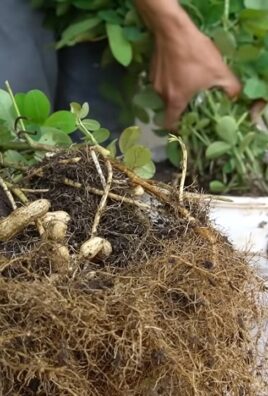
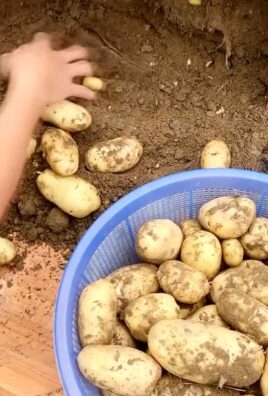
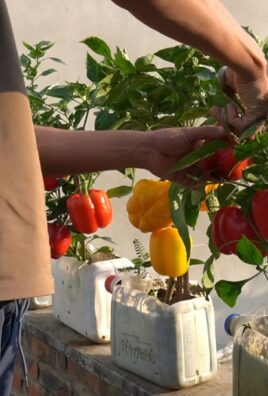
Leave a Comment